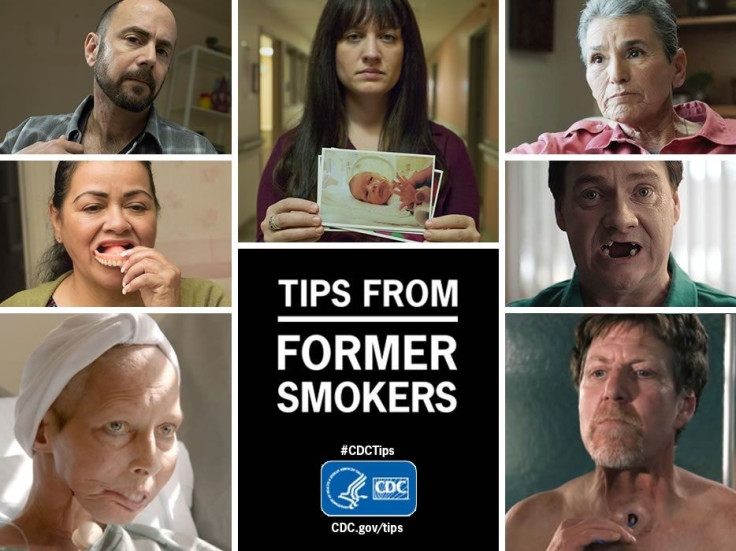'Tips From Former Smokers' Ads Put Us Up Close And Personal With Smoking-Related Disease

We all know it’s hard to quit smoking. After all, smokers’ brains probably get more rewards from smoking than from the benefits of quitting — that is, until they quit. But considering that it’s easier to convince someone to do something through imagery rather than through words or text, it’s no wonder why the Centers for Disease Control and Prevention’s (CDC’s) “Tips From Former Smokers” ad campaigns have worked so well. Now, just in time for the release of new data on tobacco use in the U.S., the campaign is back, and launching on July 7.
“These new ads are powerful. They highlight illnesses and suffering caused by smoking that people don’t commonly associate with cigarette use,” said CDC Director Dr. Tom Frieden in a press release. “Smokers have told us these ads help them quit by showing what it’s like to live every day with disability and disfigurement from smoking.”
Indeed, the stats don’t lie. During the last nine-week run of Tips ads, there were over 100,000 additional calls to the 800-QUIT-NOW hotline. This translated into an 80 percent increase in weekly calls, on average, when compared to the week before they started airing. Additionally, the Tips website saw about 650,000 unique visitors by the end of the campaign.
For the new campaign, the CDC enlisted seven people who are now suffering from smoking-related illnesses to speak about their daily lives. Their afflictions range from lost teeth to cancer, including one woman who recently died from cancer at 53 years old. They also tell the story of Amanda, a 30-year-old mother who smoked during her pregnancy, and caused her baby to be born two months premature, putting the child at risk for severe birth defects.
“Amanda’s powerful story brings to life some of the health problems smoking during pregnancy can cause for unborn children,” said Dr. Tim McAfee, director of the CDC’s Office on Smoking and Health, in the release. “The best time to quit smoking is before you get pregnant, but quitting any time during pregnancy can help your baby get a better start on life.” At least one in 10 pregnant women smoke during their last three months of pregnancy, the CDC reports.

In conjunction with the campaign launch comes a set of new data on the prevalence of tobacco use throughout the country. During 2012 to 2013, an astonishing one in five U.S. adults used tobacco products every day or on “some days,” with men using them more frequently. Cigarettes are still the most common vehicle for consuming tobacco, with 18 percent of tobacco users smoking them. Although it’s a significant drop from 2009, when smoking prevalence was at 19.5 percent, it’s still not enough.
Meanwhile, 2.6 percent of users consume tobacco in a smokeless (snuff and chewing) form, while two percent use cigars or cigarillos, 1.9 percent use e-cigarettes, 0.5 percent use hookahs, and 0.3 percent use pipes. With regards to these forms of tobacco, there isn’t much hope for users either, as some of them tend to smoke cigarettes as well. Tobacco companies have even begun targeting youth with these less-familiar types of tobacco.
Smoking is still the number one cause of preventable death in the U.S., killing 480,000 Americans annually. And while these people are dying, another 16 million Americans are living with smoking-related diseases. Before the aforementioned woman featured in the Tips ads died of cancer, she urged anyone who is trying to quit to “keep trying until you succeed — I don’t want anybody to go through what I’m going through.”
Source: Agaku I, King B, Husten C, et al. Tobacco Product Use Among Adults — United States, 2012–2013. CDC’s Morbidity and Mortality Weekly. 2014.
Published by Medicaldaily.com



























